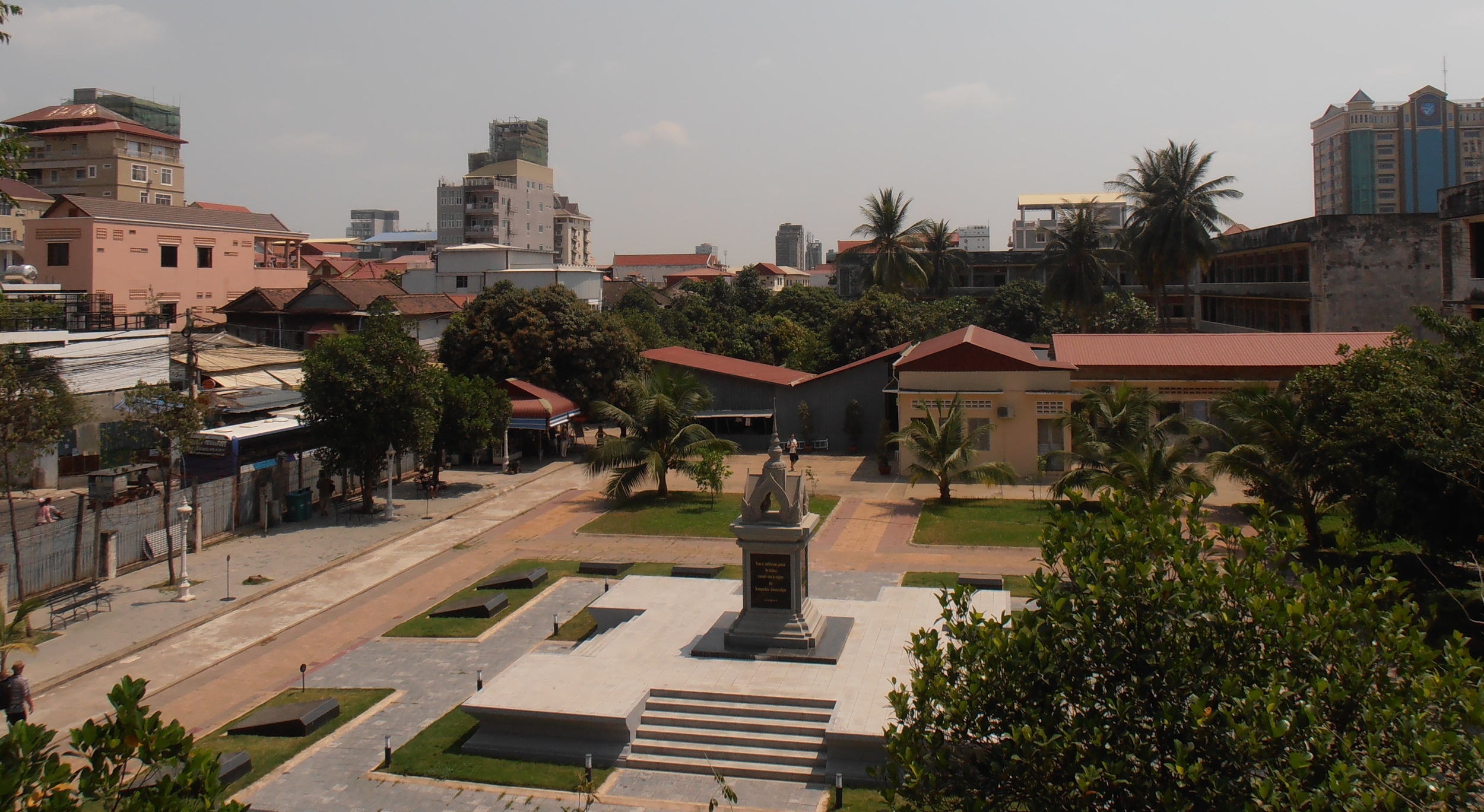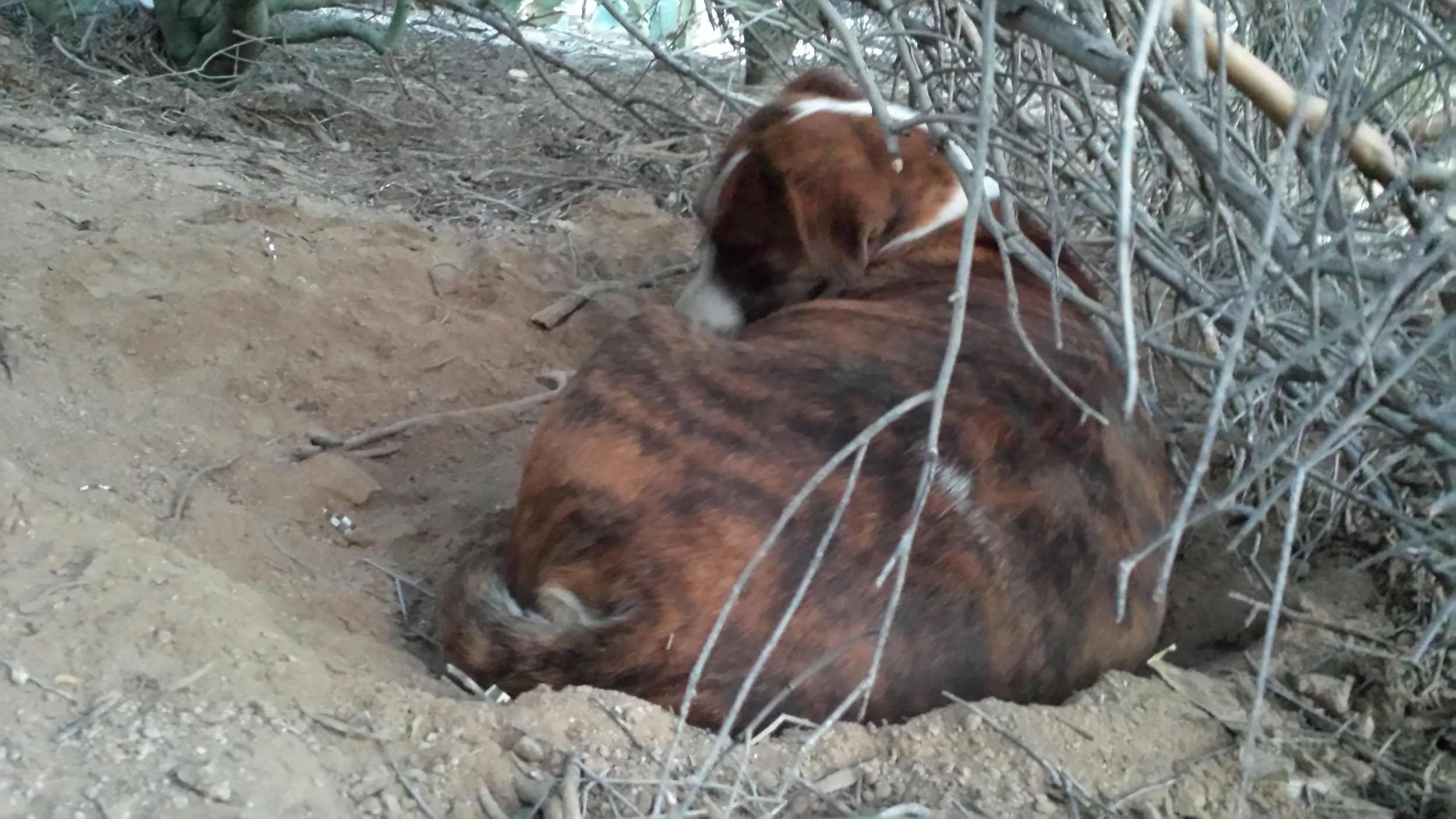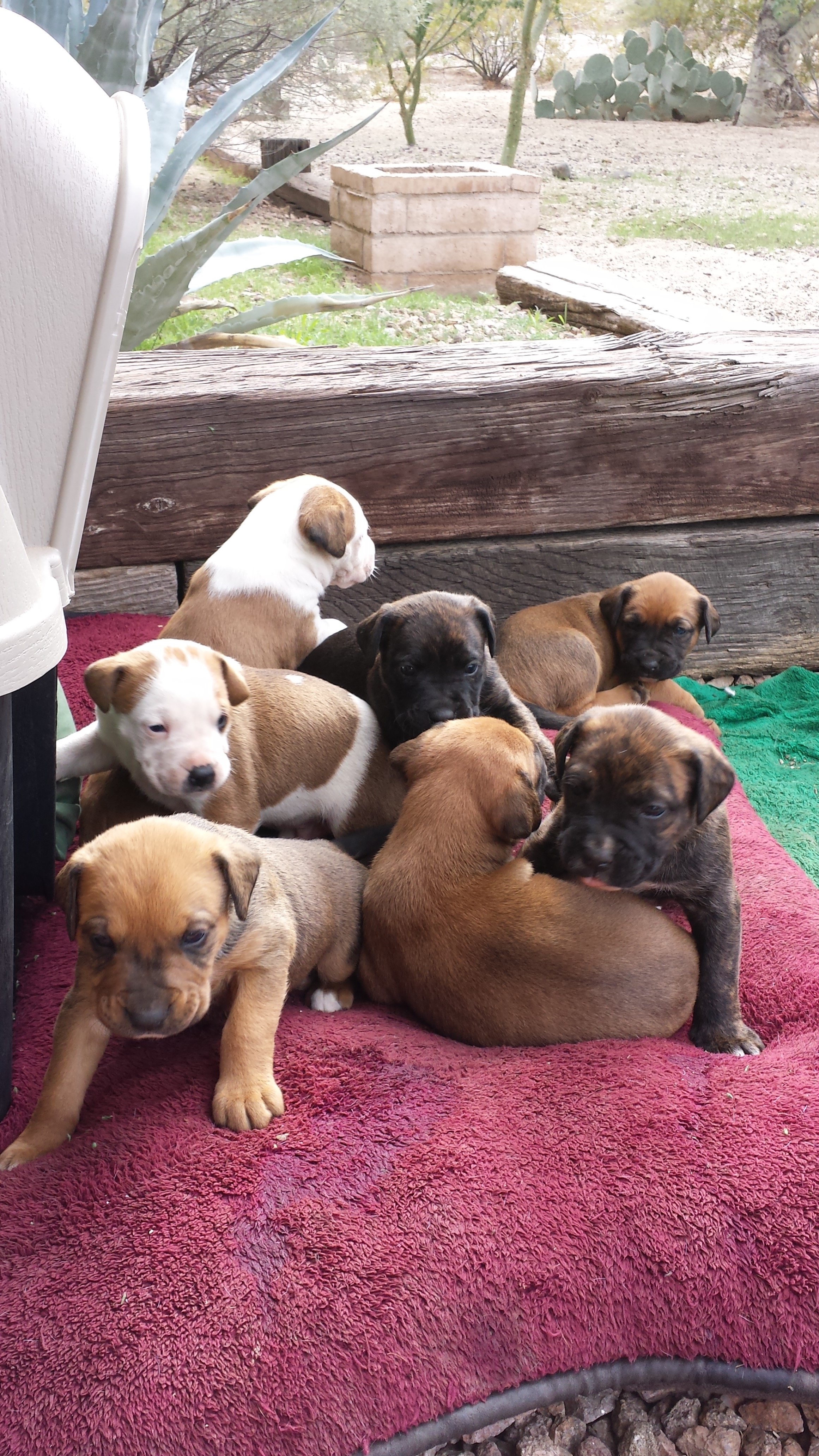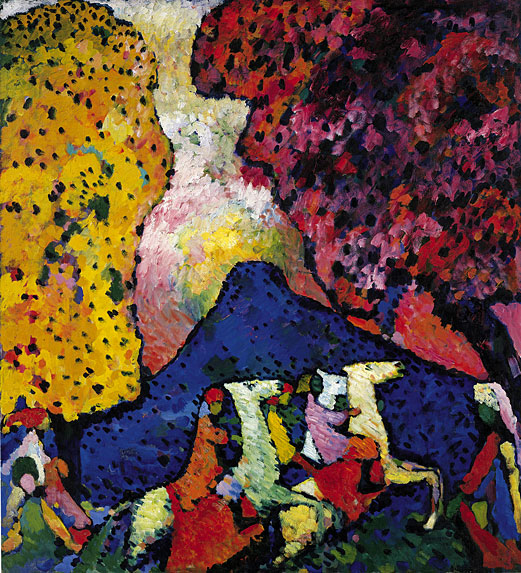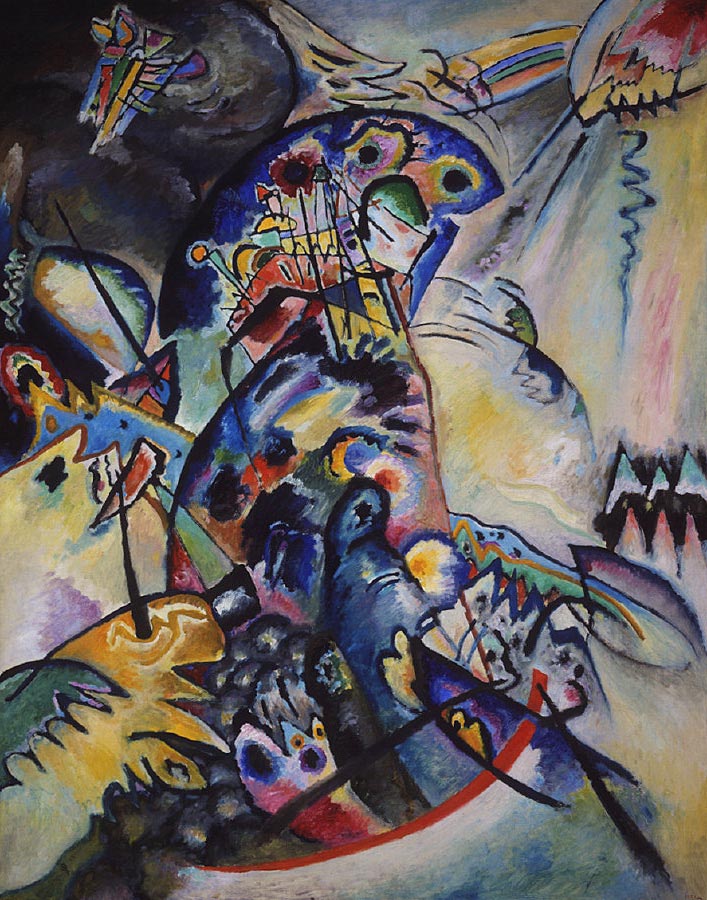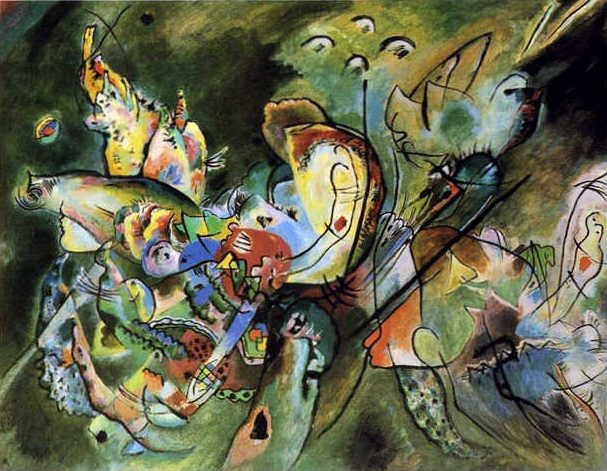Photo by James Lee on Unsplash
Read moreDay 24 Pay Attention
Photo by Ashley Batz on Unsplash
Read moreDay 23 Ponder the Color Green
Photo by Jason Dent on Unsplash
Read moreDay 22 Adjust When Necessary
Photo by Mick Haupt on Unsplash
Read moreDay 21 Celebrate Your Accomplishments
Photo by Ethan Hoover on Unsplash
Read moreDay 20 Get Up From Your Desk and Go
Photo by Fabien Wl on Unsplash
Read moreDay 19 Surround Yourself With Inspiration
Photo by Alessandro Bianchi on Unsplash
Read moreDay 18 Take a Moment to Chat with a Friend
Photo by Nathan Dumlao on Unsplash
Read moreDay 16 Honor Your Daily Ritual
Photo by David Brooke Martin on Unsplash
Read moreDay 15 Drink Your Water
Disclaimer - I am a water drinker, work in the water sector and I’m very biased toward drinking water. LOL. Seriously - drinking water is one of the most important things we can do when we ‘re trying to get healthy. Water is essential for our health. According to Mayo Clinic:
“Every cell, tissue, and organ in your body needs water to work properly. Water is essential for maintaining your body temperature; lubricating and cushioning your joints, and getting rid of waste through urination, perspiration and bowel movements. And drinking water during or after a meal aids in digestion.”
Mayo goes on to say that how much to drink each day has no definitive answer and is variable based on activity level, where we live, and other health factors. Historically, I’ve heard 8 glasses a day but is this enough? too much? I have no clue. So some practical tips for how I determine when I need to drink more:
Thirst - if you’re overtly thirsty in the desert (Phoenix) - you could already be dehydrated. So while thirst is an indicator, I better be drinking water before I get really thirsty. I tend to drink a glass of water with each meal, while I’m working, and during physical activity. I always have a glass of water nearby even when driving.
Monitor my dog’s drinking habits. In the desert, I tend to drink more water in the summer than winter. So I watch the dog’s drinking habits. When I see them drinking more or when I notice I’m having to fill up the water pan more, I start drinking more to prepare my body for the summer heat.
Watch my urine color. Okay this may seem weird to some but I can tell by my urine color if I’m drinking enough water. If the “yellow” is too yellow I know I need to drink more water. May be a coarse way to think of this but it works!
Hey - if I’m drinking water I’m not eating. While I’m not too concerned about weight loss at this stage of my get well journey, I do find myself hoping to lose a few pounds!! Drink your water every one!
Day 13 Plan Your Day
Photo by Dayne Topkin on Unsplash
Read moreTips to surviving virtual captivation
Millions of Americans are now working virtual! Just let that soak in!
Millions of Americans are now working virtual. All I have to say is WELCOME to my world. Seriously, welcome. I’ve been working in a home office, mostly virtual since 2004 and teaching online since 2009, coaching doctoral students online since 2011. I want to share some tips to help you navigate what for some might be a disorientating, I don’t like it kind of moment.
Before, I do, let me share from the heart. I know that this sort of transition can be chaotic and disorienting for those used to working primarily in a f2f environment, I hope you experience my at times goofy, sometimes serious, sometimes even angry at the biases we have against virtual as ‘less than’ with all the heart I intend. We are blessed to continue working during the pandemic. We are blessed to be able to continue, hopefully, doing what we love to do. I do understand this as an adjustment. If you are feeling cranky, lost, and just want to talk through your experiences and get some creative ideas for how to adjust, reach out. I love my virtual world and spend a great deal of time tending it (grin). Now is the time to support and help each other. Peace and hugs, Alicia On to some tips:
Stock up on coffee or whatever your favorite beverage is. The last thing you want while in captivation is to run out of caffeine! Seriously, it’s all hands on deck and somebody best be gettin’ to the store straight away if the coffee runs low. Whatever you like to drink during the workday make sure you have plenty of it! A word about alcohol consumption. If you’re a daily drinker - be careful if you notice yourself rationalizing having a drink at lunch, in the afternoon, etc. This may be nothing or it may be a stress reliever that can turn into a habit rather quickly as stress, boredom, and isolation persists.
Avoid keeping a lot of snacks on hand, unless you want to gain weight. OMG, the first year I worked at home I was like a were-pig eating all the time as a time filler, procrastination tool, stress reliever, etc. If you’re one of those lucky skinny people who eat what you want, oh just stop it and if you’re like me who can gain easily, pay attention to how you’re using food throughout your day!!
Set aside work place, dress, and behaviors. Most people get up every day and go to work literally. Their transition from private to public begins with the alarm and then accelerates as one gets ready, gets in their car or takes public transportation, with arrival at their workplace signaling the clear demarcation of private versus public behaviors. I STRONGLY encourage those new to virtual work to create a unique space dedicated to “work” then get up every day, dress for work, and go to that place. I don’t wear formal business attire but I dress for a more casual Friday approach, every.single.day. Then where possible, create a dedicated office space everything you need for work. Then go there - every.single.day. Part of the challenge in switching from a public office versus working at home is demarcating the day as private versus public and nonwork versus work. Developing habits of being will help this transition and in the reverse establish those patterns necessary to ‘shut off’ work.
Break up your virtual day with physical activities such as exercise, reading, and creating! The online environment can be a tyrannical task master!! All of a sudden you’ve been solely in front of the computer for 8 hours. My gosh, it’s deadening and numbing. About a year ago, I realized that I was stuck creatively, wasn’t reading anything - not even fiction, and had lessened my exercise. The first thing I did was to sit for one hour a day just reading. Dang, at first, I had the jitters - it was difficult to concentrate, I was distracted, I had trouble immersing myself in whatever was written, etc. I started doing some research and realized that the online environment is built around an attention economy - one where it demands our attention. The trade off is that we can lose concentration ability, reflective capacity, and the ability for prolonged creation. To offset, our online time, we need to take breaks. Sitting for long times concentrating literally reduces one’s creativity, ability to process, etc. You know the feeling - that moment when you’re stuck, you just don’t know what to do next, so you get up to get coffee (see #1), take a walk, gossip, etc. and then voila, all of a sudden, it comes to you that which you were concentrating on so earnestly?! Rest and breaks are vital. In a virtual world, you have to be intentional about this because it’s too easy to sit all day in one place. Sigh, I know this one too well….
Procrastinate - Oh my gosh, employers be like, don’t say this! Everyone just calm down - virtual employees need spaces within which to take a break (see #4) and to pursue things that connect them to the broader world. This is important. The isolation associated with the closing in of the four walls can be a palpable experience especially at first. So procrastinate, visit your social media sites or perhaps start one…; find virtual topics of interest for free - I’ve included some ideas below!
The assumption that f2f is better than virtual communication is an assumption. We have a strong bias in our culture toward f2f communication, although with the ubiquitous rise of technology this is changing….rapidly! f2f and virtual communication are equally rich, connective, and relationally oriented. There, I said it. Somehow we think that connecting with people on the phone or via a computer is somehow less real or authentic than f2f. This bias may color our interactions and/or experiences of working virtual in ways that aren’t healthy for those with whom we interact or for you, as a virtual worker. An aspect of what influences the efficacy of virtual communication is something called social presence which basically is the connectivity and interaction experienced by people in relation to the other. In online learning, for example, social presence is how a student experiences the instructor. Research shows that strong social presence positively correlates into a student’s commitment and engagement within the learning environment. Same is true for virtual teams, where our perceptions about virtual interaction color our engagement with others that may translate into a stickiness or felt sense that you are fully present, engaged, and participating in the relational dialogue. Now is not the time to defer to when you can be f2f, we still have to deliver, whatever it is we’re hired to deliver. For those transitioning, perhaps for the first time to virtual, now is the time to set aside those assumptions about virtual relationships and communication and figure out strategies to be fully present and revealing of who we are as a worker.
Some free virtual stuff!
Museums: World Class Museums to visit online. Virtual Museums
Art Galleries and experiences: Kusama infinity mirrors – virtual Living Room concerts – virtual Metropolitan Opera – virtual Musee d’Orsay Paris – virtual National Gallery of Art virtual Royal Opera House London virtual
The Social Distancing Festival virtual Street art - google virtual
Books: New York Public Library e-books Project Gutenberg – Free books
Courses: Arts classes – free online courses Coursera free online courses EdX – free online courses
Zoos/Aquariums: Georgia Aquarium virtual San Diego Zoo virtual
Travel : Great wall of China virtual Yellowstone National Park virtual Yosemite National Park virtual
Photo by kate rowe on Unsplash Photo by Efe Kurnaz on Unsplash
Public Spheres, Freedom, and Gun Control →
Freedom. Freedom is not anything goes. Our public spaces dictate certain types of behaviors as appropriate, proper and legal. Public spaces have a code, a suite of social norms, expectations, and laws governing our behavior. These norms operate often behind the back – we trust and entrust ourselves to them daily. When we leave our private residence we have for example, traffic rules (e.g., traffic lights, speed limits, seat belt laws) – all designed to regulate our collective behavior within the public sphere. We have rules about smoking in public places, spitting and gum chewing, bicycle use, skateboard use – many rules govern our daily life.
While in a public space, we have a reasonable expectation that someone isn’t going to strike our person or otherwise inflict harm either personally or collectively. For example, in movies, we see this sort or regulatory action with the silence your cell phone reminders. People can’t smoke indoors or near public doors; people can’t drink to excess and then drive, etc. Social groups peacefully live together by their social norms, rules, and laws. We collectively define what the public experience is like and this definition is experienced as reality, as the way things work and are.
Collectively, we experience shock and awe following incidents like the Las Vegas massacre. I experience a deep sadness, grief, particularly because partially what goes through my mind is here we go again. As a nation, we’ve had many opportunities to grieve, to experience shock, grief, and anger following these sorts of murderous rampages ravaging our public sphere – movie theaters, grocery store parking lot, schools, concert venues, churches – the list goes on and on. Most citizens say this is wrong and that something needs to be done. Nothing gets done in part because our collective desperation for safety and security within our public spaces and protections for our freedom to assemble, live, and connect within the public sphere are seemingly secondary to 2nd Amendment protections about the right to bear arms.
Hear me on this – I am not anti-gun or anti-2nd Amendment. There are many people in the country with guns who use them responsibly with a healthy respect for their distribution and use. Often though, the default answer to these sorts of events is guns don’t kill people, people kill people. Well, okay. That answer is dismissive and one dimensional to the point of being trite especially so in the face of yet another massacre. The ease with which one can and the freedom to amass weapons regardless of the person’s motive, mental health, etc. creates a scenario by which our collective freedom to publicly assemble and presume safety and security in those spaces is grossly threatened.
Freedom is not anything goes – it is negotiated within public spaces among citizens using social norms and laws to create a space where all can hopefully flourish. So, I ask those defensive for gun laws – what are you willing to do relative to gun laws and individual rights that might offer a level of protection, safety, and security for our collective capacity to assemble in public spaces? How might you balance the freedom to purchase guns with protections that might prevent a person’s capacity to amass weapons that wreak such havoc? I realize that this is a multi-dimensional challenge – mental health, for example, is important to this discussion. But it begins with a thoughtful response to gun control and access. Ultimately, this is a how shall we then live...together sort of question.
Photo by Diana Feil on Unsplash
Hateful Rhetoric Diminishes Us all
“It is cruel, it’s frightening....and the truth is, it hurts.”
In a recent speech, Mrs. Obama gave voice to the myriad of emotions, thoughts, and frustrations I've experienced since hearing Trump's sexual assault comments and later dis-mission of those assertions as locker room banter. I am angry for women - sick and tired of sexualized rhetoric that diminishes who we are as persons and of powerful men who persist in thinking this sort of thing is okay. It's not okay. At the same time and equally offensive though is the association of this sort of talk as... something men do. Not the men in my life, not the many men who have supported, taught, mentored, encouraged, prayed for, laughed with, and stood with other women and me. I've been fortunate and blessed with many male colleagues and friends who have regarded me - using regard in the fullest sense of the word. Men who would never think, speak, or act in this way and who would find this sort of aggressive assault and objectification language offensive and demeaning... for us all. Thanks, Michelle Obama for speaking and for the passion with which you gave voice on this issue.
A response to Prince EA's Why I Think the World Should End video
A daily prayer: May today be about love not experienced as an emotional response...instead, a fierce commitment one to another characterized by: an acknowledgment of a shared creator, respect and a sense of responsibility for others, and an orientation towards others infused with an ethic of care calling us to action.
So thankful my parents were people for whom relationship was the most important thing...
Where were you in 1975-1979? Beware A Leader's Capacity to Lead
Some places fill your pores with a sense of memory, foreboding and wariness. Cheong Ek Genocide Memorial, located approximately 15 KM from Phnom Penh is one of many killing fields within Cambodia. Tuol Sleng - Site 21 was a site of imprisonment, torture, and murder located in Phnom Penh. Both are reminders of man's capacity to espouse a hateful rhetoric and afflict horrendous acts upon fellow citizens in the name of ethnicity, religion, profession, and political affiliation. Male, female, young, old - no one was immune from being deemed an enemy of Cambodia and the Khmer regime. Pol Pot came to power as the General Secretary of the Communist Party of Kampuchea giving rise to the Khmer regime. For the Cambodian people this rise to power represented an onset of fear, terror, and genocide within the country. The horrors of surviving this time period where between 1.5 and 2.5 million people are tortured and murdered affects a people, affects us all, really.
Both sites have signs posted to remain quiet but the signs were unneccessary - my experience while there was of silence except for birds in the trees and chickens roaming the property. Walking both sites evoked a seriousness and a sober-ness. Watching others process, observe, react, cry, leave a room, turn away - somehow observing even in hindsight affects us individually and collectively. I didn't take a lot of pictures at either site - both felt like sacred ground, like places to be still.
The Memorial Buddhist Shupa at Cheong Ek is multiple stories high acrylic sides with the lowest level including clothes at the site, next levels include over 5000 human skulls, and the upper levels including other bones - all found at this killing field.
Signs of beauty and life around the Killing Fields.
Tuol Sleng site...
Reflections
1975-1979 - Where were you? What were you doing during these years? I finished 8th grade and went to high school - meanwhile, seemingly a world away Pol Pot arose to power. One account indicated that within 3 hours of taking power, people were being excised from Phnom Penh. The horrors of surviving a time period where between 1.5 and 2.5 million people are tortured and murdered affects a people, affects us all really. Only 40 years ago! We're not talking ancient history - within our lifetime! I found myself concerned at how powerful a leader's ideologies are in influencing a nation to ill effect. Some thoughts on leadership:
A leaders's actions and communicated ideologies are derived from his or her deeply held values and worldview.
Those with horrific ideologies believe they are 'right' and represent what's 'good' for a country and her people.
A authoritarian leader may ~seem~ as though they have the common good at the root of their message and eloquently communicate this sense manipulating people to believe they have people's best interests at heart.
People (some) will follow and enact an authoritarian ideology focused on difference and perceived categories (nationality, ethnic, race, gender, profession, religion...). For those who inflicted torture and who murdered, I wonder if afterwards in their life there was remorse, a sense of oh my gosh what have I done...
A regime's first act is to categorize, divide, and exclude people (those for the Regime, those who are not) and to communicate that division, always accompanied by secrecy, fear methods (imprisonment, torture, death), and destruction of cultural artifacts, those things that connect a people one to another.
Once a regime and its methods get established, the system of abuse, torture, and murder instill a fear and a systematization that can be maintained for a while.
Regimes meticulously document their actions through record keeping, logbooks, and photographs. There were rooms at Site 21 filled with photographs of those who were housed there.
Time reveals the truth and extent of a leader's actions, but while it's happening it may be unclear the extent of the horror. However - words are precursors to action and/or provide clues that we should be wary of (exclusion, boundary setting, hateful rhetoric, gross generalizations or categorizations), etc.
Hope. Despite a horrific history and collective memories around that history, people trust again, they live a hopeful life, and can go on.
References
Cheong Ek Genocide Memorial http://www.cekillingfield.org/index.php/en/
Tuol Sleng http://www.tuolsleng.com/
Time Magazine The Legacy of PolPot: A Photographic Record of Mass Murder. http://content.time.com/time/photogallery/0,29307,1948150_20http://www.tuolsleng.com/13738,00.html
Leadership Studies Academic Program Design Tips
Newsflash: I am a faux academic. Yep, my initial foray into academia was adjunct teaching followed by an investigation into the feasibility of offering a doctoral degree at Johnson University (then Johnson Bible College). In 2008, JU asked me to explore the possibility of offering a Ph.D. in Leadership Studies. Part of this analysis included a desktop review of 97 universities who offered a PhD or DMin in Leadership Studies or related degrees. An outcome of this process include my understanding of a Leadership Studies Academic Program Design Framework depicted in Figure 1 followed by a discussion of each element.
Figure 1: Academic Program Design Framework
Leadership studies theoretical framework – Clearly define what you mean by leadership studies. Few colleges or universities published their definition of leadership studies on their website. Some underlying biases and assumptions were revealed when examining the program description, organizational placement and the required curriculum. However, leadership studies as a field of study would benefit from more intentional defining of the term. Practically, your definition of leadership studies and associated biases and assumptions about the topic influences every facet of your program design including purpose, curriculum, goals, and objectives. Through conscious and deliberate definition and understanding you lay the baseline from which decisions are made throughout the design and implementation of your program. Key questions include: How do we define leadership? What dimensions of leadership are we most interested in such as leader as self; leader within organizations; leader in society; other factors? What are our underlying philosophies of teaching and learning and how do those philosophies influence (if they do) our theoretical framework?
Statement of purpose – Create a unified vision and statement of purpose, one that is reflective of your leadership studies theoretical framework. The key remains a concisely worded statement of purpose: “The purpose of this program is to XXX.” Key questions: What is the purpose of this program? What are the desired outcomes? What will a graduate of this program look like upon completion?
Five programmatic elements are derived directly from the Leadership Studies Theoretical Framework and Statement of Purpose: organizational placement, target audience, delivery methods, degree requirements, and curriculum. Key questions: What is the rationale for design decisions within each element? How does each design decision align with your Leadership Studies Theoretical Framework and your Statement of Purpose? What criteria will be used to evaluate each element?
Organizational placement – I have no data to support this but I suspect that organizational placement sometimes occurs because a person with the idea is matrixed to a particular School, College, or Division. This may be okay considering academia’s tendency toward associating with persons of similar interests (said tongue in cheek). Theoretically, the person or people with the initial idea and who develop the theoretical framework are most likely to develop a theoretical framework in keeping with their particular School, College, or Division. Warning: my thoughts that follow, admittedly, are “ideal” rather than how I see things usually working. Ideally, though, a decision to add a new program is a strategic decision, one undertaken with deliberation toward key questions such as: Where is a leadership studies program of this type best placed given our theoretical framework and our statement of purpose? Where in the college or university as a whole can we best meet our goals for this program? Do we need to create a new school, college, or division?
Target audience – Defining your target audience is closely coupled with your Statement of Purpose. Inherent in defining your purpose, whether overtly or covertly, is a to who question. Consider two differing purposes such as: (a) prepare students to teach and do research, or (b) develop or equip professionals or practitioners to lead. Two different purposes, two different target audiences, each with potentially differing delivery methods, degree requirements, and curriculum. Key questions: What kind of students do you want to participate? What do you envision students doing with the degree? Do multiple purposes exist with differing target audiences? Who do you imagine them being post-degree?
Delivery method – Devise delivery methods best suited to your Statement of Purpose and target audience. Consider multiple delivery options (e.g., classroom, online, hybrid) and/or creative scheduling if your target audience includes working adults. Key questions: What are the best delivery options given our Statement of Purpose and Target Audience? What creative alternatives exist for face to face instruction and scheduling? How much face to face interaction is desired in addition to classroom (e.g., mentoring, residencies, regional meetings, etc.)?
Degree requirements - Outline degree requirements best suited to Statement of Purpose and Target Audience. Consider each element (required core and elective coursework, candidacy or qualification process, dissertation or project) in relation to your Leadership Studies Theoretical Framework and Statement of Purpose. Key questions: What is the relationship of course requirements to Leadership Studies Theoretical Framework and Statement of Purpose? What is the role of and best approach given the role of candidacy or qualification? What is the role of and best approach for the dissertation or project? What other requirements are necessary to meet purpose?
Curriculum – Align your curriculum requirements within your Leadership Studies Conceptual Framework and your Statement of Purpose. A broad concept of leadership studies emerged around the topics or themes of: (a) leadership and leadership studies; (b) organizational studies, (c) interpersonal behaviors: team and group dynamics; (d) communication; (e) culture, global society, and policy; (f) ethics, (g) research, (h) dissertation; and (i) other special topics. Within each topic or theme, there was much variation. Clearly, leadership studies isinterdisciplinary and broadly defined. This illustrates the importance of your Leadership Studies Theoretical Framework, a clear definition of what you believe becomes the roadmap for developing your curriculum. Key questions: What must a student know given our Leadership Studies Theoretical Framework and our statement of purpose for us to meet our goals and objectives?
Be intentional and deliberate in defining your terms and translating that definition throughout all elements of your leadership studies program. Your clarity and rigor in decision making to always go back to your Leadership Studies Theoretical Framework (what we’re about) and Statement of Purpose (Why we exist)when defining the Organizational Placement, Target Audience, Delivery Methods, Degree Requirements, and Curriculum (how you participate) translate into clarity, coherency and alignment within communication.
Communication – Craft communication that is carefully considered, aligned, clear, and coherent. I recall one website where a definition of leadership studies was not provided, statement of purpose was “develop professional leaders”, target audience was business professionals, and the core classes were Introduction to Business and Economics. I experienced a disconnect wondering how I was going to be developed as a leader studying business and economics. By aligned, I mean all the elements fit together because they have been rigorously designed through intentional validation against the Leadership Studies Conceptual Framework and Statement of Purpose. Clear simply refers to the overt manner in which you describe each element of your leadership studies program and clarity with which a reader can review your purpose, requirements, delivery methods, etc. For websites, in particular, pay attention to the ease with which people can find information in a logical manner. A subject for another day is college or university website design. It was maddening at times trying to find information on websites! Finally, coherency is a goal worth striving for. By coherency, I refer to the human response to reviewing information about your leadership studies program and seeing how the pieces fit together, how they relate, and the ability to visualize themselves within that program. Key questions: What might potential students want to know about this program? What are the messages and methods for communicating our leadership studies program that contributes to alignment, clarity, and coherency?
Continuous improvement – Set goals, objectives, and target measures. Obtain and assess feedback. Take action to continually improve your leadership studies programs. Continuous improvement serves to: (a) focuses attention on key issues, (b) clarify expectations, (c) facilitate decision making, and (d) emphasize learning and improving. A successful continuous improvement framework provides appropriate consideration for improving practices, strategies, and decision making. Measuring performance provides the means for assessing change and growth in each areas. Define goals , objectives, and target measures for your leadership studies program so you have key information to: prioritize and allocate resources; make needed adjustments or changes in policy or program directions to meet goals; to frame actions toward success in meeting performance goals; and to improve quality. Key questions: To meet our Statement of Purpose, what do we need to know generally? What do we need to know programmatically (within each element)? What do we need to know about our students? About our alumni? For each, what are potential goals, objectives, and desired outcomes? How will we gather information and assess?
Momma Bear: What I learned from a year with this incredible girl!
A year ago today Momma Bear gave birth to 8 puppies - this was a crazy event in our world, I have learned so much from my sweet Momma Bear. Where to begin.... We live on a remote road across the street from South Mountain. It's our little bit of heaven, a place near downtown Phoenix remote enough that we experience nature and have room to breathe deep.
Routinely we have what we affectionately call 'dump dogs' visit for water and food. Dump dogs because people dump pets they no longer want at South Mountain. I assume people think that dogs will hunt for food; however, the desert is challenging and water scarce. We had one beautiful dog show up who's feet pads were so pristine...she obviously was an inside dog ill prepared for desert walking. Typically when dogs show up - we call Maricopa Animal Shelter, although we had two dump dogs we adopted Lovee Boy and Little Bit. Lovee took >3 months to even pet him, he was traumatized and Little Bit was simply a girl we fell in love with instantly.
Momma Bear and another puppy showed up in October or so in 2014. I was standing at the kitchen window, Lovee and Little Bit were laying on their bed inside when I saw Momma Bear and Puppy drink from the water pans we keep out front. Both dogs' ribs were showing and I thought oh crap. Dog laws in Maricopa County are a bit screwy - if you call the MAC, then the dogs you want picked up are supposed to be 'contained' so they can pick up the animal for transport. However, often times dogs that visit our property are traumatized either due to abuse or because they've been roaming around awhile - there's no way to contain them for pickup unless you feed them for sufficient time that the dogs trust you. The law also says that if you feed a dog more than 3 days, technically the dog is yours and the pickup is no longer a rescue but a surrender in which case you're supposed to pay a surrender fee. From our perspective, this is a no win because bottom line: when we see an animal that is hungry and needs water, we're going to provide. The idea that we would deny food/water to these dogs who were obviously hungry and thirsty is just dumb, isn't going to happen.
Across the road we placed a food and water pan and began the process of feeding, watering, and socializing Momma Bear and Puppy. Mommy very quickly began to come to a whistle and would let me pet her...Puppy was much more reticent. The plan was to get them somewhat socialized and then call MAC. However, it became apparent that Momma was pregnant. Yikes - now what are we going to do?! We decided that the most humane thing would be to keep the dogs together and around until after she had the babies. When we decided this...honestly, I don't think we thought too hard about the logistical challenges and changes having puppies around would present. In hindsight we recognize this was INSANE! But at the time all we thought was that Puppy was still not very social and Momma was pregnant, their chances in a shelter might not be great.
We got home later on Sunday, December 14 to discover no Momma or Puppy. Hmmm, I went searching and found that Momma had dug herself a trench and was laying there. My initial thought was okay - I'll get some supper going and then tend to her, our biggest concern was the cold, it was supposed to get down to upper 30s and she was laying outside on the dirt in an unprotected place. So I went in to supper and when I came out - Momma and Puppy were gone. I looked and looked and finally thought that she probably went off into the desert to have her puppies. But then I saw Puppy laying near the front door so I went to check and sure enough Momma was laying inside the dog house. I breathed a sigh of relief because there was a heat lamp there for the dogs, warm bedding, and shelter to protect the puppies. I didn't know what the other dogs might do with puppies. At about 2:30 Monday morning (12/15) - I awoke and went to check on her - at that time she had just had a puppy and was cleaning it. By the time it was all done, Momma had 8 puppies, one later passed.
Within 24 hours, we noticed Momma was rattled and dazed - I put out a question on Facebook and was advised to feed her eggs and milk supplement. Given she was malnourished when she arrived and hadn't quite recovered from that, I assumed pregnancy depleted her. Once I began feeding her the eggs and milk booster with extra food - she seemed less rattled and capable of caring for her puppies. She was a good Momma, attentive, and very clean. It wasn't long before puppy mania ensued!!!
On SuperBowl Sunday 2015, all the puppies were taken to a shelter where they were adopted within a week. Puppy was taken to MAC and we decided to keep Momma Bear. The day the puppies left we let Momma Bear in the house where she went straight to the couch and made herself at home where she proceeded to 'sleep it off.' The next few months were quite tumultuous - she was fixed and then started losing weight. We discovered she had Valley Fever and Tick Fever - treatment for both took months. After a while though her energy returned, she started putting on weight and she went from a somewhat listless girl to one who leapt, jumped, and generally got in your face.
Lessons Learned from a year with Momma...
- Hospitality and relationship often begin with available food and water.
- Providing food and water do not guarantee relationship...hunger and thirst are primary needs secondary to relationship.
- One has to earn the right to be heard and earning this right is dependent on trust.
- Trust comes from consistent presence. Being there, caring on her terms, and availability.
- Having been 'dumped' and then roaming for food fosters trust issues and insecurity.
- Relationship and touch cannot be forced - these things have to be earned. While Momma more readily received some physical attention early on it was always on her terms. I remember a time after she had puppies where she crawled into my lap and leaned real hard into my body. When trust is given it's complete and demonstrated physically.
- Eyes reveal the soul - Momma has old soul eyes - sometimes loving and sometimes wary.
- Rebuilding a life takes time - it is an inner journey that she must take in our presence.
- Play is a daily group activity.
- Best thing of all is time together.
- Hello kisses are always in vogue!
We did not need a 3rd dog especially a somewhat neurotic insecure girl. She can be jealous, insecure, wary, too aggressively in your face - all of these things and more. And yet. She's part of our crazy family - sweet, tender, always loving. She still gives full body hugs, loves to cuddle, and cannot wait to say hello when we come home. I'm so happy this beautiful girl, our Momma Bear, adopted us!
Stone Campbell Dialogues: Addressing Race and Racism Within the Church and Society
From the outset I sensed that a conversation about race and racism would be a tough conversation. These sorts of topics are maddening in their personal and systemic reach and difficulty. Replete with images and messages depicting Black and White Americans, our media highlights challenges on a regular basis. So it was that a group of Christians committed to dialogue, conversation, and frankness convened to explore Black and White within the church in the United States.
Mural by Ernest Shaw, Baltimore 401 East Lafayette Street http://www.examiner.com/article/baltimore-artist-creates-images-to-uplift-communities
Logistics
Held November 13 and 14 - Our dialogue was sponsored by the Stone Campbell Dialogues, facilitated in partnership with the Racial Unity Leadership Summit, and hosted by Mountain Christian Church in Joppa, Maryland and West Side Church of Christ, Baltimore, Maryland.
Affectionately called the Stone Campbell Dialogues, this annual gathering brings together representatives from the Christian Church, Churches of Christ, and Disciples of Christ historically rooted in the Stone Campbell or Restoration Movement. These conversations exist to develop relationship and trust. . . through worship and through charitable and frank dialogue." I joined the National dialogue team in 2012 representing the Christian Church tradition - this is truly a highlight of my year. I hold my co-dialogue partners in the highest regard!
The Racial Unity Leadership Summit (RULS), founded by Dr. Jerry Taylor, Abilene Christian University, is a a national program of the Churches of Christ, focused upon inspiring unity among people of different races and cultures. RULS emphasis on contemplation and transformation speaks to my commitment to creating transformative learning spaces:
“When blacks and whites become partners in a contemplative community, they can experience together the transformation of their conscious and subconscious minds. It is when people sit together in silence that they give their souls the opportunity to communicate with one another in a spiritual language that is not of this world. Authentic racial unity grows out of an authentic spiritual union between human souls that are jointly connected to the divine life of God. It is only when their attachment to the life of God has complete supremacy in their hearts that people find the strength to release their attachment to the color of skin.”
Dr. Jerry Taylor of Abilene Christian University serves as the RULS director. What follows are highlights from each presenter. I should say a word about target audience for this dialogue is primarily Christians; therefore, I have intentionally used the vernacular of each presenter. I realize that a downside of this may be a sort of "Christian-ese" language and vocabulary.
Speakers and Notes
Newell Williams (President, Brite Divinity School) opened our time together highlighting our Stone Campbell Movement history saying that racism has been a part of the Stone Campbell tradition....."Since the beginning..."
Don McLaughlin, preaching minister of the North Atlanta Church of Christ in Atlanta, Georgia will serve as the program director for the Baltimore Stone-Campbell Dialogue/RULS.
“We don’t have the vocabulary” to discuss race relations currently or presently. He then noted that while our conversation specifically focused on African American and White relations, this focus required attention to three parameters: 1) To the females in the room, we are behind the game in addressing gender roles and issues; 2) This conversation does not address other minorities and peoples for whom racial injustice occurs; and 3) We must have an open hear to be educated.
Daryl Reed, Lead Pastor of DC Regional Christian Church - That the World May Believe
In referring to John 17, Daryl reminded of the focus: “so that the world may believe.” He noted relative to apologetics that love is the strongest defense, experiencing the love of Christ as embodied and enacted in His people. He asked: How did we get so much right and miss the big stuff? “When we are completely connected to Jesus, we will do what it takes. Citing Joshua 1:9, Daryl exhorted that it will take courage and leadership to begin to address race issues.
~ Transition ~
After Daryl’s talk, Don questioned whether ‘color blindness’ is really what we’re after given that color blindness:
· Requires that I see less of you
· Possible creates less to deal with
· Denies the fullness of a person’s being
“Do you have to know me less to love me more?" Unity [in the John 17 sense] is the expression of how we live with difference.
Doug Foster, Professor of Church History, Abilene Christian University - The Great Deception: How Satan Created Our Perceptions of Race and Deprived Us of Christian Unity
Doug started with a reading of 2 Corinthians 3:12-18 – specifically: 6 But whenever anyone turns to the Lord, the veil is taken away. . . . . And we all, who with unveiled faces contemplate the Lord’s glory, are being transformed into his image with ever-increasing glory.”
The United States story is perpetually filled with conflict and oppression of peoples. If we look historically within the United States, race is seared into the US DNA (e.g., slavery, US Civil War, Jim Crow Laws, Civil Rights, incarceration, Black Lives Matter, etc.). Using excerpts from the film: Race – The Power of An Illusion While we are founded on the ideal of All Men Are Created Equal, the US created a story around the idea of race, an idea that led to notions of that black and slave were synonymous. In an 1846 debate of ‘species’ Samuel Morton put for a notion that blacks were inferior based on skull size. Josiah Nott further argued that blacks are a different species. These ideas served to naturalize a social structure where blacks were subhuman, inferior to whites. Doug emphasized that this creation of a perception of blacks’ inferiority does not go away when Morton and Nott’s flawed science is debunked, does not go away when slavery is gone, and does not go away with civil rights. The rationale does not disappear even if it is flawed once it becomes enculturated. The film Ethnic Notions explored anti-black stereotypes highlighting how popular culture reinforces stereotypes:
· Black is ugly – standards of beauty, comparatives, distortions of black images
· Blacks are savage – African = primitivism, reversion to savagery
· Blacks are happy servants – sambo, Uncle, etc.; dancing, singing, big smile
Project Implicit is a test that explores a person’s thoughts and feelings outside of conscious awareness and control. https://implicit.harvard.edu/implicit/
Mural by Ernest Shaw, Baltimore 401 East Lafayette Street
~ Transition ~
Don discussed the challenge of systemic racism noting the difficulties of moving forward because trust is simply not present. “It’s hard to face [that as a white male] I am complicit.”
Travis Stanley, Pastor of Norwalk Christian Church (Disciples of Christ), Norwalk, Iowa - Disrupting White Supremacy from Within
Whiteness is often portrayed as the antithesis of blackness. Whites created race as a construct. Cone (2014) in the Cross and the Lynching Tree asserted that white theologians ignore race. Racism is a white problem. Disrupting White Supremacy notes the following:
- ·Locating ourself in this life sucking system malforms us as white people.
- ·Acknowledge the oppressive system. Name it.
- · Uncouple white ‘maleness’ from the discussion. This is not about feelings, it’s about systemized superiority. Need to dismantle the system.
The reconciliation paradigm has failed us – it is inadequate. Travis referenced The Black Manifesto of 1969 which was written to white churches. Relationship is not the problem. Power is the problem. He called for reparations.
~Transition~
Don asked: Why do some white people get offended by the notion of white supremacy? White privilege is not solely about resources, it’s about access.
Travis Hurley, Vice President of Development, Ozark Christian College, Joplin, Missouri - The Next Generation Must Be Better
How did we get so far from the truth?
David Fleer, Professor of Bible and Communication, Lipscomb University - How to Talk About Racism: The Art of Scapegoating
Truth telling is a prerequisite to reconciliation. Scapegoating prohibits my seeing.
Reflections
This was a day where childhood memories came flooding in from a life lived in a small town in the 1960s and 1970s. 'Diversity' where I was raised was often described in terms of Catholics and Protestants. So many stories though... I don't recall any African Americans in our town or school. Life revolved around work, school, church, and family - sporting events were popular. It was told that African Americans could not be in town after sundown although an exception was made for athletic teams. So many memories... As a young child in the mid-60s returning from family vacation we were driving through East Saint Louis when one of my brothers said the N-word. Daddy pulled the car over and yelled at us to never ever say that word. Momma reflecting on working at an ammunition plan in Texas in the late 1940s/early 1950s where she supervised a crew of black men saying that when her boss asked if she was afraid of the blacks she said No! - she was a whole lot more afraid of the white male truckers - they weren't afraid of repercussion...hearing Mom describe the time when the Ku Klux Klan came down the center aisle of the church with a gift. I recall a time in Sunday School when we were asked to describe what it meant to be unequally yoked in 2 Corinthians 6:14 - I said it was a discussion about belief and nonbelief but was informed that this was about interracial marriage - don't yoke yourself to someone who's not your kind. ...so many images and stories. I wonder about my unquestioned or unrecognized biases and assumptions.
December 12
For a million reasons I didn't publish this blog post. I guess I felt as though it were way too summative with little substance....I found myself fearful that it would seem to light brush a topic that is so vital and important. This week, however, I am reeling in response to persistent hateful rhetoric stemming from what I perceive to be feelings of national boundary setting, fear of decreased security, and X-phobia (black, Hispanic, Muslim, homosexual, non-US citizen OR any other category). The news and social media included a litany of calls to: deny all Muslims access; prohibit refugee entry, monitor mosques, kick everyone out, build a wall, see entire groups as this or that (gross negative assertions about entire groups of people), blow 'em all to hell, arm yourself with guns and protect yourself from terrorists.. ....on and on it went. Hateful. Bigoted. Isolationist. Dangerous. Murderous language. Rhetoric justified by its communicants as okay due to concerns about national boundaries, security, fear, otherness, and judgment.
Clearly, I understand the fear that one could be in a movie theater and there be an attack - a fear of dire consequences related to being in the wrong place at the wrong time; a sense of shaken reality stemming from monitoring one's surroundings looking for things out of whack. It's odd for my husband and I who both travel for work to talk about a contingency communication plan should there be a terrorist attack somewhere where we are or that prohibits our travel. I understand that we are thinking differently, we are more cautious. Yet - in the face of possible horrors the call to love and be hospitable is ever present. God's grace is never ending and in response we must strive to extend grace. I don't know how we do this but I know we are called to do so - no exceptions. I find myself praying for a time of silence and meditation - it feels like we are at a time in history of amped and intensifying communication, hatred, bigotry with accompanying negative actions. Some Scriptures important to my understanding include: John 17, Mark 12, and Hebrews 2. Jesus said his followers are in the world but not of the world. Our national citizenry lessens in comparison to our identification with Jesus and his kingdom. In Mark 12 and Hebrews 2 - Christians are called to love your neighbor and be hospitable to strangers. These passages are swirling through my mind as I try to process this dialogue and discussion around race evoking the following thoughts:
- Orientation - We are called to orient ourselves to others with love, hospitality, and with a focus on unity.
- Unity is NOT about agreement, e.g., agreeing to a specific interpretation or doctrine but again one of orientation one toward another.
- Citizenship - Believers' citizenship (God's Kingdom) ultimately transcends locational citizenry.
- Love and hospitality are required...even to strangers...those not like us, we don't know. There are no expressed boundaries to our call to love and be hospitable.
- Grace - this is a challenging concept to understand (God's grace, by God's grace) but also as in extending grace to others AS it has been extended to us.
- Political correctness leaves little room for conversational grace where people seek understanding and revelation of thoughts and assumptions. In digging deep, we likely are to say things that can be perceived as 'racist' - yet in the spirit of dialogue and grace we must talk with one another.
- 2D thinking and rhetoric (right/wrong; black/white, etc.) minimize the complexity of this conversation and are not that useful in their opposition and hierarchy.
- Bridge building - there must be leaders committed to creating opportunities for dialogue and opportunities to discuss these issues, raise awareness, and seek restoration.
At the outset of this post, I said that the Dialogue I attended was a dialogue of fellow Christians trying to highlight issues of race as a way of fostering understanding and conversation. This week I have seen far too many instances of Christians joining in with the negative assertions and hateful language. Sigh. I'm reminded of my grad school ethics professor who said that the call to be a follower of Jesus is the most demanding call - one where a person transcends the tyranny of the day in response to grace through expressions of love and hospitality for others...even when those expressions are difficult and seemingly non-nonsensical.
Resources
Foster, D. (2015). Raising Consciousness—White Privilege & Creation of Race, Annotated Bibliography. Download PDF (Shared with permission from D. Foster, 11/2015).
Taylor, M. (2015). Moving Beyond Color Blind. Retrieved from http://christianstandard.com/2015/12/moving-beyond-color-blind/
Press Release. (2015). http://christianstandard.com/2015/11/race-unity-topics-at-stone-campbell-dialogue/
Book: Concerning the #Spiritual in #Art by Wassily Kandinsky
There's something about art...I can spend hours in museums, streets, books exploring and reading about artists, art, and the varying explanations and philosophies. I like the way Helen Mirren described her love of art: "Just a note of a song can make you feel something and likewise a painting can make you feel the same thing." Ahhh, yes...an experience beyond words.
About Kandinsky's art, Mirren noted the seeming "chaos and randomness but organized. . . [an] incredible contradiction." When I see a Kandinsky I experience fascination, beauty, and geometry - I wanted to read more about his ideas, then I found his book: Concerning the Spiritual in Art. I should state from the outset that I have no formal training in art or art history - thus, I am just a girl trying to make sense of this book. [Source: All images of Kandinsky's art retrieved from WassilyKandinsky.net and are for noncommercial use.]
Background
Wassily Kandinsky (1866-1944) was born in Moscow, studied law and economics, and then turned at the age of 30 to a life of art and art theory. Early examples of his works include Kochel Lake with Boat (1902), Blue Mountain (1908/1909), Murnau Street with Women (1908), and 304 (1910).
Per WassilyKandinsky.net, Kandinsky experienced four movements throughout his work: 1911-1914 Blue Rider Period; 1914-1921 Returning to Russia; 1922-1933 Bauhaus, and 1934-1944 Biomorphic Abstraction.
1911-1914 Blue Rider Period
Untitled (1910) is considered Kandinsky's first abstract painting and by some as the first abstract painting in general. He wrote Concerning the Spiritual in Art in 1912.
One of my favorite pieces from this period.
1913 Color Study Squares With Concentric Circles
1914-1921 Returning to Russia
Some favorites from this period: Blue Crest (1917); Overcast (1917); and White Line (1920).
1922-1933 Bauhaus
This is my favorite period! Circles in a Circle (1923); Two Movements (1924); In Blue (1925); and Dark Freshness (1927).
1934 - 1944 Biomorphic Abstraction
Gentle Ascent (1934); Gravitation (1935); Orange Violet (1935)
Thoughts on Concerning the Spiritual in Art
I’ll have to say I feel like I have only gleaned the surface of Kandinsky’s meaning relative to the spiritual in art. What follows are some key themes that spoke to me:
Art offers revolutionary possibility and is the sphere turned to in time of societal stress, breakdown, and chaos. “When religion, science and morality are shaken. . . . when the outer supports threaten to fall, man turns his gaze from externals in on to himself. Literature, music and art are the first and most sensitive spheres in which this spiritual revolution makes itself felt” (p. 25).
Artists and their art connects humans to a deeper or transcendent meaning. “To send light into the darkness of men’s hearts – such is the duty of the artist” (citing Schumann, p. 16). “No other power can take the place of art. . . at times when the human soul is gaining greater strength, art will grow in power, the two are inextricably connected” (p. 63).
Art communicates – without the use of words. I’m increasingly tired of the primacy of words and speech acts as the preferred communication method – particularly when the rhetoric is 2D, hateful, and divisive. “At different points along the road are the different arts, saying what they are best able to say, and in the language (emphasis mine) which is peculiarly their own” (p. 31).
One’s hermeneutic must move beyond impression or observation (what the art is, what it depicts, or its specific configuration or construction) to an allowance for the art to communicate its meaning. “Our materialistic age has produced a type of spectator or ‘connoisseur,’ who is not content to put himself opposite a picture and let it say its own message. Instead of allowing the inner value of the picture to work. . . . his eye does not probe the outer expression to arrive at the inner meaning” (p. 58).
Kandinsky's Spiritual Triangle represents a societal and personal progression from solely material to spiritual concerns where the primary movement is influenced by artists and their work. “Painting is an art, and art is not vague production, transitory and isolated, but a power which be directed to the improvement and refinement of the human soul – to, in fact, the raising of the spiritual triangle” (p. 62).
In describing the triangle, Kandinsky spoke of an artist's Inner Need where : “(1) Every artist, as a creator, has something in him which calls for expression (this is the element of personality). (2) Every artist, as a child of his age, is compelled to express the spirit of his age (this is the element of style). (3) Every artist, as a servant of art, has to help the cause of art (this is the element of pure artistry [the top of the pyramid]” (p. 43). Prophets are those artists who move from art for art's sake extending the expression of the age's spirit or accepted forms of expression. Kandinsky noted that the spiritual prophets [artists], whom he also described as eccentric and solitary visionaries, are capable of “seeing beyond [each] segment” (pp. 18, 19). This seeing beyond creates a spiritual movement of transcendence beyond our physical and material condition, a movement with influential power relative to our collective meaning and experiences. Kandinsky used particularly derisive tones relative to Art for art’s sake, a retrogression from the spiritual: “The vulgar herd stroll through the rooms and pronounce the pictures ‘nice’ or ‘splendid’. . . . this neglect of inner meanings. . . . this vain squandering of artistic power is called ‘art for art’s sake’” (p. 16). Perhaps his tone is related to what his belief that humans “hunger consciously or, much more often, unconsciously for their corresponding spiritual food” (p. 18).
So What?
My curiosity about this notion of 'spiritual in art' arises from a bias that there's something about aesthetic experience that facilitates a moment where humans transcend individual interest solely captivated by the awe or beauty of the experience of art, music, theater, dance, etc. I've stood before works where people were like wow! and felt this sense that undivided attention was toward the wowness such that individual concerns were suspended but for a moment. Additionally, a few years ago I researched the worldview and leadership of Vaclav Havel a playwright who later became president of Czechoslovakia (now Czech Republic). Since I studied his life and learned about his 'spirituality' grounded in a sense of connectedness and responsibility - I am fascinated by the special role, power, and influence artists have in society. In Havel's case, a playwright and his cadre inspired the Velvet Revolution. Kandinsky's work provides a framework via the triangle to understand art and artist's importance beyond the material toward meaning, purpose and transcendence. I realize in using the word transcendence I'm not defining it - this too is a term I want to learn more about. Reading Kandinsky is but a starting point in this exploration - finally, this work was written early in Kandinsky's career - it would be good to read more of his ideas to further clarify definition and meaning of key constructs: spiritual, sacred, inner meaning, and inner need, for examples.
Sources
WassilyKandinsky.net Retrieved from http://www.wassilykandinsky.net/
Kandinsky, W., & Sadler, M.T.H. (2010). Concerning the spiritual in art. Readaclassic.com You can also download this book in PDF format.
Source: All images of Kandinsky's art retrieved from http://www.wassilykandinsky.net/ and are for noncommercial use.








